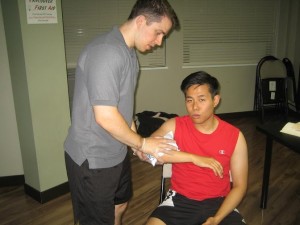The skin is prone to a variety of open wounds that differ in type and severity. The treatment options tend to vary depending on the nature of the injury. The treatment is aimed on promoting wound healing with limited disfigurement and preventing infection.
Close look on the common forms of open wounds
Abrasions
Abrasions are open wounds brought about by traumatic scraping and loss of skin. Falling while in motion frequently leads to skin abrasions. The extensive loss of skin can occur with high-velocity vehicles.

These open wounds necessitate thorough cleansing and bandaging specifically those that involve superficial skin loss. Deep abrasions require further treatment that might include skin grafts in severe cases.
Punctures
Puncture wounds are caused by forceful, deep skin penetration from pointed objects. Accidentally stepping on a nail or any sharp object is the usual cause of these open wounds.
The penetration of the object can introduce bacteria into the deeper skin layers where they rapidly flourish. Tetanus is an issue for concern when it comes to puncture wounds.
The wound is treated with thorough cleansing and getting a tetanus shot. In case of human or animal bites, antibiotics might be included due to the high risk for infection.
Lacerations
Lacerations are cuts on the skin from sharp objects. Knives, broken glass or other cutting tools typically cause this type of open wound.
It is vital to cleanse these open wounds to lower the risk for infection. The wound is closed using tissue adhesive, skin staples, adhesive strips or even stitches.
Burns
Burns vary based on the depth and amount of skin surface affected. The superficial burns quickly heal without scarring. The deeper burns include superficial and deep partial-thickness burns.
A superficial partial thickness burn is less likely to cause evident scarring. The deep partial thickness burns involve full destruction of the skin. Highly extensive deep partial thickness and full thickness burns necessitate medical care.
Ulcerations
These are cavity, open wounds brought about by localized breakdown of the skin. Inflammatory conditions, poor circulation, extensive pressure and significant fluid accumulation is likely to result to skin ulcers.
Chronic cases pose as a challenge due to the disrupted healing of the skin. The resolution of the underlying condition might help in the healing of the skin ulcers.
Quick Note / Disclaimer
The material posted on this page on different types of open wounds is for learning and educational purposes only. To learn more about the various types of open wounds, register for a first aid and CPR course with Toronto First Aid.
